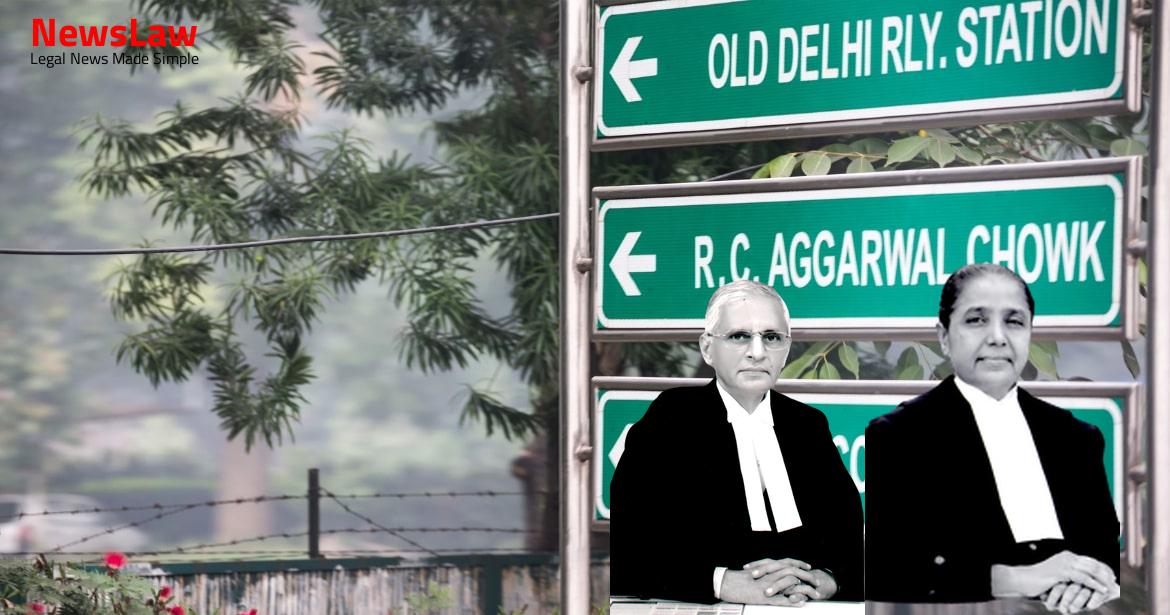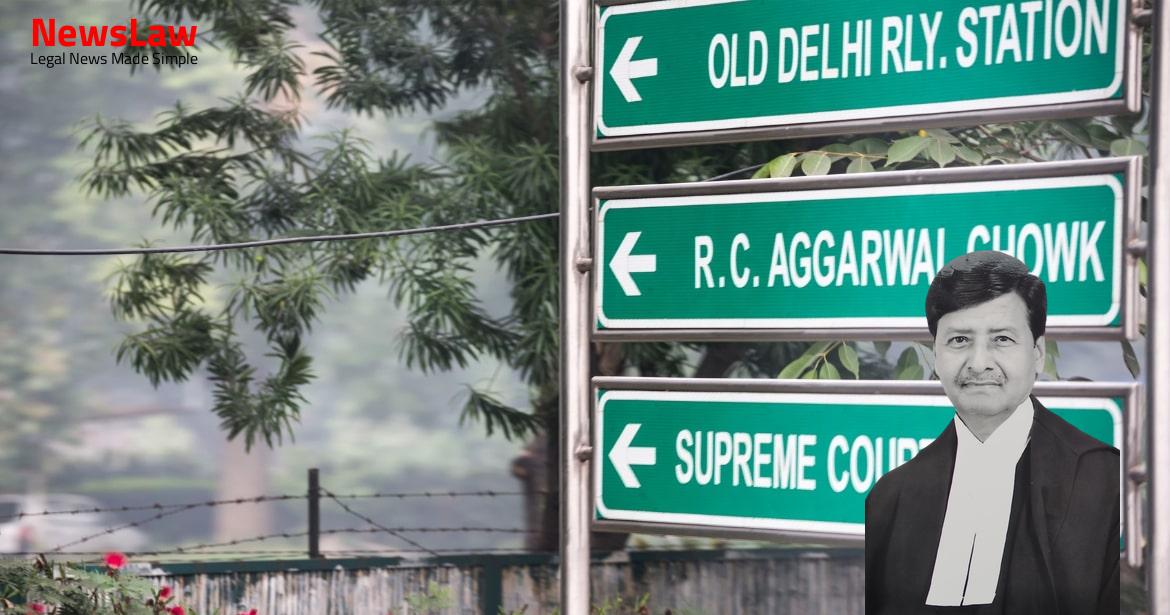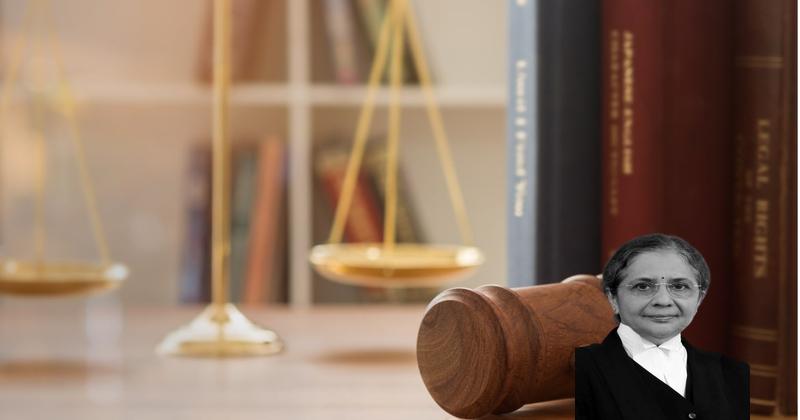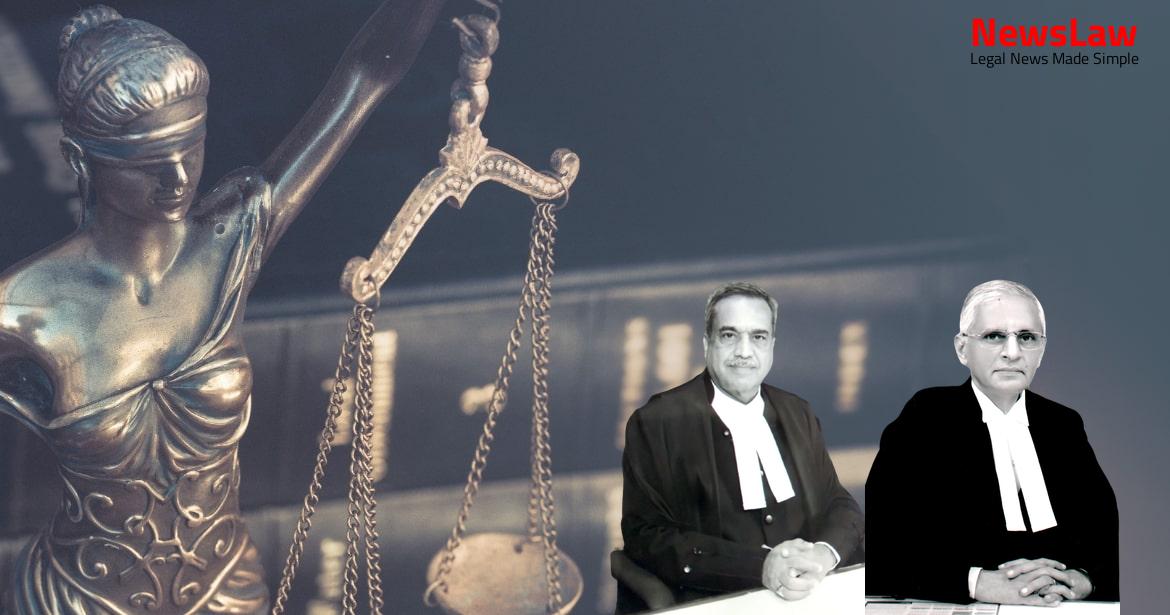The High Court’s analysis of land valuation and development deductions in a recent case sheds light on the complexities involved in determining fair compensation. Different rates for agricultural and non-agricultural land, deductions towards development costs ranging from 20% to 75%, and considerations for pre-existing infrastructure all played a crucial role in the court’s decision-making process. Stay tuned to understand the legal intricacies involved in land acquisition cases.
Facts
- The High Court considered two sale deeds, Exh.23 and Exh.35, to determine the market value of the acquired land.
- Exh.23 from 03.06.1976 showed a value of Rs.6 per sq.ft. with a 10% increase for every year.
- Exh.35 from 03.02.1982 showed a value of Rs.6.90 per sq.ft. after possession by the State Government and Section 4 Notification.
- The High Court adopted Rs.6.90 per sq.ft. as a fair and reasonable valuation based on the evidence.
- The Reference Court allowed a deduction of 33 1/3% towards development charges.
- The valuation certificate issued by PW-2 for civil, mechanical, and electrical structures was not considered by the High Court.
- The High Court did not consider the loss of business and financial crisis faced by the appellant due to the acquisition.
- A 40% deduction towards development costs was made by the High Court, which the appellant argued was excessive.
- Different valuation rates were applied for agricultural and non-agricultural land portions of the acquired land.
- The S.L.A.O. awarded compensation based on different rates for agricultural, non-agricultural, and Potkharaba land portions of the acquired area.
- The High Court enhanced the amount for dismantling charges from Rs.2,39,000/- to Rs.3,86,867/-, as awarded by the Reference Court.
- In the case of land acquisition for the Hiwra Dam project, development deductions were lower due to pre-existing infrastructure.
- The High Court affirmed the Reference Court’s decision of 20% deduction for development costs.
- Various costs were awarded by the High Court, including compensation for land value, dismantling and damages, replacement of electrical installation, depreciated value of machinery, and loss of business.
- The Supreme Court allowed an appeal and remitted the case back to the High Court for fresh disposal based on recent judgments.
- The High Court’s decision to reduce the amount awarded for depreciated market value of electrical installation was deemed unjustified.
- The total valuation of the land and various constructions/civil works was calculated and modified by the High Court and later affirmed by the Supreme Court.
Also Read: Jurisdiction of Family Court in Cases under Muslim Women’s Protection Act
Arguments
- Mr. Gopal Balwant Sathe, counsel for the appellant, contested the judgment.
- The High Court was criticized for not considering the valuation certificate (Exh.-21) provided by PW-2-Mukund Dharashivkar, an Empaneled Government Valuer.
- It was argued that the State Government did not present any evidence to rebut the valuation certificate.
- Learned counsel argued that the High Court appropriately reduced the compensation granted by the First Appellate Court.
- There is no justification to challenge the judgment based on the fact that the compensation was reduced by the High Court.
Also Read: Legal Analysis: Ensuring Compliance in Contempt Proceedings
Analysis
- Depending on the nature and location of the acquired land, extent of land required to be set apart and expenses involved for development, 30% to 50% deduction towards development was allowed in specific cases.
- The general rule is one-third deduction towards development, but in certain circumstances, the deduction for development cost can vary from 20% to 75%.
- Previous judgments such as Haryana State Agricultural Market Board v. Krishan Kumar, Director, Land Acquisition v. Malla Atchinaid, Mummidi Apparao v. Nagarjuna Fertilizers & Chemicals Ltd., and Lal Chand v. Union of India have addressed the issue of deduction towards development in land acquisition.
- The sugar mill was idle from 1981 to 1986.
- The Executive Engineer’s office deposited Rs.72,02,224 in the Civil court.
- Possibility of electrical installation damage during dismantling and re-installation.
- Appellant acknowledged settlement of entire claim.
- Rs.10,00,000 paid on 21.09.2018 and Rs.5,00,000 paid on 02.11.2018 to the appellant.
- No statement of income produced for the appellant.
- Concurrent finding of Rs.5,00,000 compensation for loss of business affirmed.
- Evidence of witness shows production of sugar stopped in 1978-79.
- Factory running in loss during 1975-76.
- Claim of making profit of Rs.2,00,000 per year not substantiated with evidence.
Also Read: Clarification on Additional Tax under Section 143(1-A)
Decision
- High Court of Judicature at Bombay Bench at Aurangabad modified the impugned judgment and final order dated 21.08.2017 in First Appeal No.601 of 1997.
- The appeals are partly allowed as a result of the modification.
- The balance amount of compensation as per the modified amount is to be paid to the appellants/claimants with all statutory benefits awarded by the Reference Court.
- The appellants are entitled to the balance amount based on the modified compensation.
- The modified amount of compensation will be provided to the appellants.
Case Title: SAJAN Vs. THE STATE OF MAHARASHTRA (2020 INSC 302)
Case Number: C.A. No.-002170-002171 / 2020



